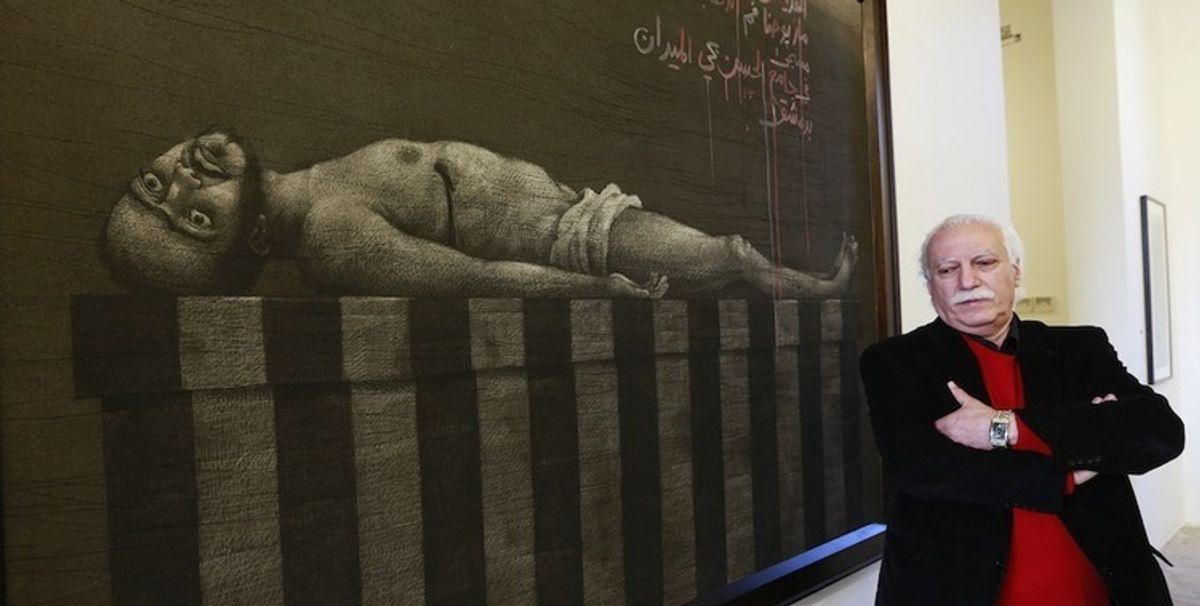The civil war in Syria has fuelled an exodus of the country’s creative individuals: artists, film-makers, writers and poets have relocated to cities such as Paris and Berlin. But some veteran visual artists have chosen to stay. They include Mouneer Al Shaarani, 64, a calligrapher and book designer who has exhibited his work around the world. He moved back to Syria from Egypt during the war to “live and work here in order to inspire”, he has said.
Youssef Abdelke, 65, whose work is in international collections such as those of the British Museum in London, has chronicled the pain of the war in extraordinary charcoal sketches. He was detained by Syrian authorities for five weeks in 2013. Despite this, he chose to remain in Damascus.
Younger artists who are reported to have stayed include the still-life artist Othman Moussa (born 1974), represented by Ayyam Gallery (Beirut and Dubai), and the painter and sculptor Fadi Yazigi (born 1966). “Maybe there are no longer any birds here, but I’m still trying to capture a mood,” Yazigi says on his website. “Art is not only part of my survival—it’s also a way of looking for a solution.” One of the youngest artists who has chosen to remain, Amr Fahed (born 1982), returned to the country in 2014 “to stay side by side next to the Syrian children in the refugee camps… and capture the sadness in their eyes”, he said at the time.
The war appears to have created a new Middle Eastern diaspora in Europe and focused international attention on contemporary Syrian art. “If I was asked to name [Syrian] artists in Paris or Berlin I wouldn’t know where to stop,” says Shireen Atassi, of the newly-established Atassi Foundation that promotes Syrian art, founded by the family behind the long-established Dubai-based Green Art Gallery.


